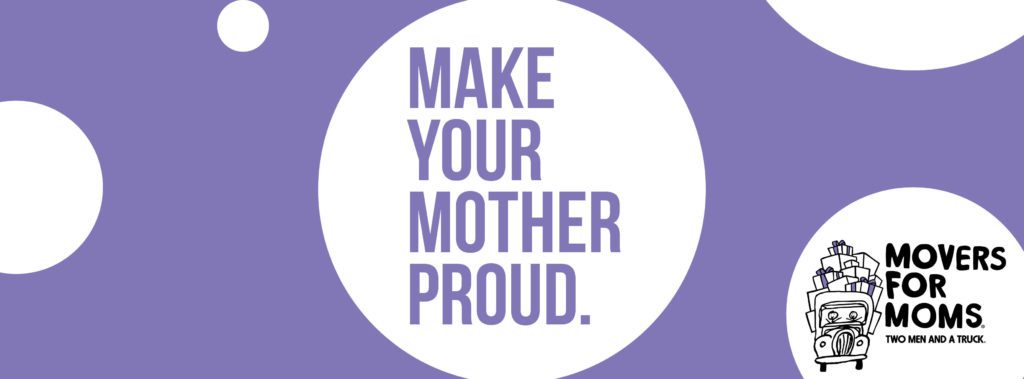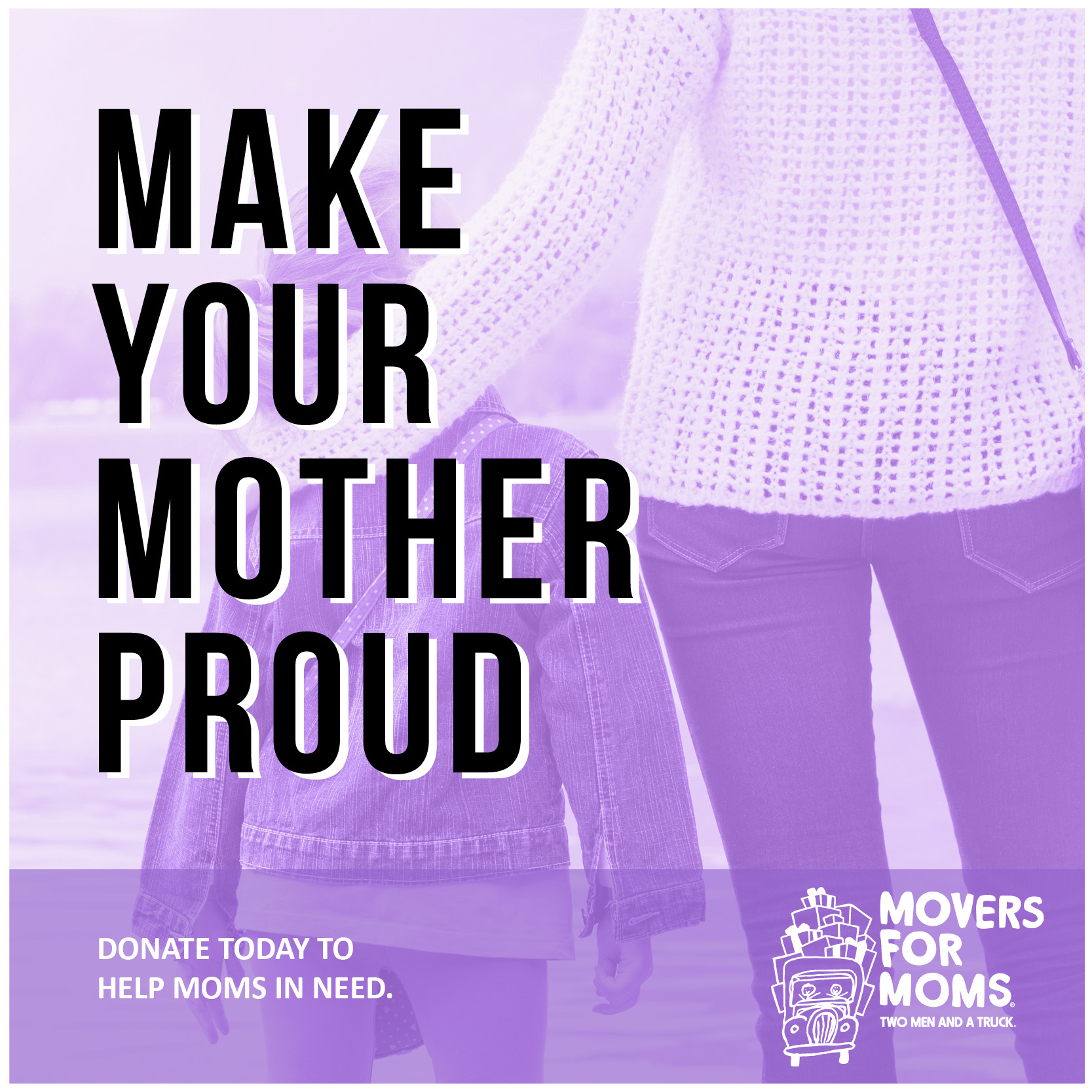Movers for Moms Collection Drive Kicks Off

TWO MEN AND A TRUCK® Kicks Off Movers for Moms® Drive to Help Mothers in Peace River Center Domestic Violence Shelters
It’s once again time for the TWO MEN AND A TRUCK® Polk County Movers for Moms® collection drive, which provides gifts and supplies to women living in Peace River Center’s Victim Services shelters as a result of domestic violence and abuse.
Making Mother’s Day Better for Those In Need
Though Mother’s Day is intended to be a joyous occasion for women across the country, thousands of moms will be overlooked on this special holiday because they are living in shelters as a result of domestic abuse or homelessness. Statistics from the Domestic Violence Resource Center state one in every four women will experience domestic violence in her lifetime, and an estimated 1.3 million women are victims of physical assault by an intimate partner each year. According to a national New York State Office for the Prevention of Domestic Violence study, approximately 25 percent of homeless women are homeless because of violence in the home.
To ensure moms in crisis receive the love and appreciation they deserve this Mother’s Day, the Polk County moving company is working with local organizations to collect toiletries, feminine hygiene products, hair care products, ethnic hair care products, diapers, wipes, towels, wash clothes, and sheet sets. Donations can be dropped off at various collection sites throughout Lakeland listed below. If your business or organization is interested in hosting a Movers for Moms collection drive or displaying a collection box, please contact Brandon Silk, Brandon.Silk@twomen.com or (863) 646-6683 Ex:52608.
Collection Sites
- Allen and Company, 1401 S Florida Ave, Lakeland, FL 33803
- CPS Investment Advisors, 205 E Orange St, Lakeland, FL 33801
- First Baptist Church Highland City Daycare, 5410 Yarborough Ln, Lakeland, FL 33812
- First United Methodist Church, 72 Lake Morton Dr, Lakeland, FL 33801
- Highland Park Church, 4777 Lakeland Highlands Rd, Lakeland, FL 33813
- Keiser University, 2400 Interstate Dr Lakeland, FL 33805
- Lakeland Chamber of Commerce, 35 Lake Morton Dr, Lakeland, FL 33801
- Lakeland Regional Health, 220 Parkview Pl, Lakeland, FL 33805
- Peace River Center Thrift Shoppe, 2934 South Florida Avenue, Lakeland, FL 33803
- Posto 9, 215 E Main St Lakeland, FL 33801
- Salt Room, 6030 S Florida Ave, Ste 125, Lakeland, FL 33813
- United Way of Central Florida, 5605 US 98, Lakeland, FL 33812
History of Movers for Moms
This spring marked the 11th anniversary of Movers for Moms®. Since its introduction, the program has expanded nationally to all 39 states and more than 300 franchises. Last year was the program’s most successful year to-date, with more than 295,000 items collected for donation to hundreds of shelters across the country. This year, TWO MEN AND A TRUCK®’s goal was to collect more than 310,000 items for moms in need across the country.
About TWO MEN AND A TRUCK®
TWO MEN AND A TRUCK® is the largest franchised moving company both in the United States and internationally. Currently, there are 357 national locations and 2,700 trucks operating in the U.S.; in total, the company operates more than 380 locations and 2,900 trucks. TWO MEN AND A TRUCK® has performed more than 6.5 million moves since its inception in 1985. The company has seen consistent monthly growth dating back to December 2009; more than 95 months of consecutive growth. Each location is independently owned and operated. For franchising opportunities, visit franchise.twomenandatruck.com.





